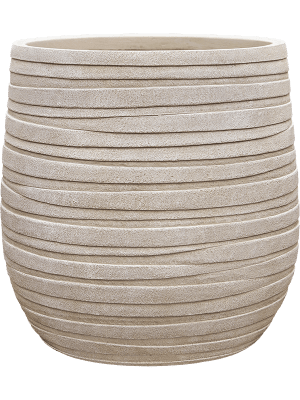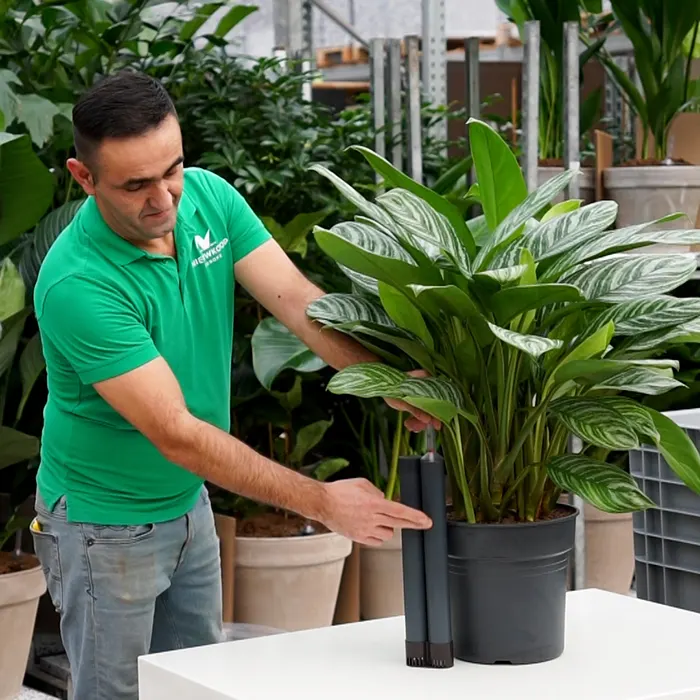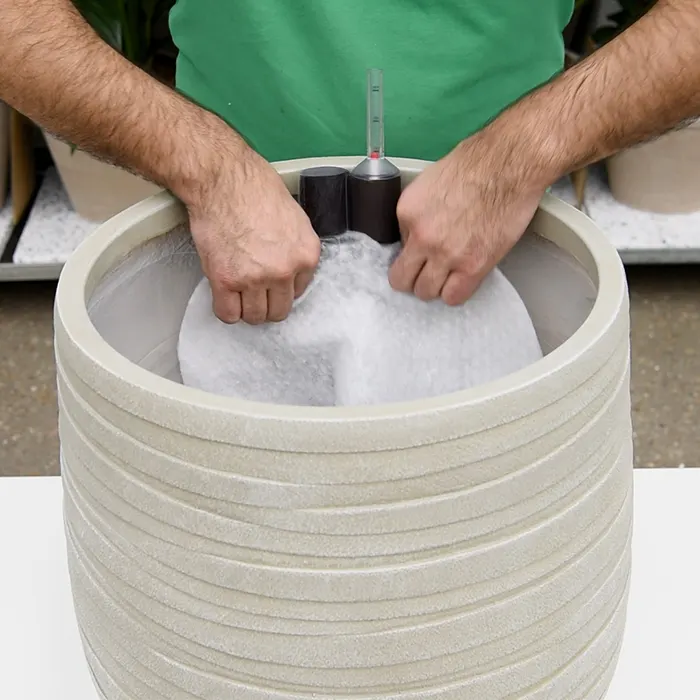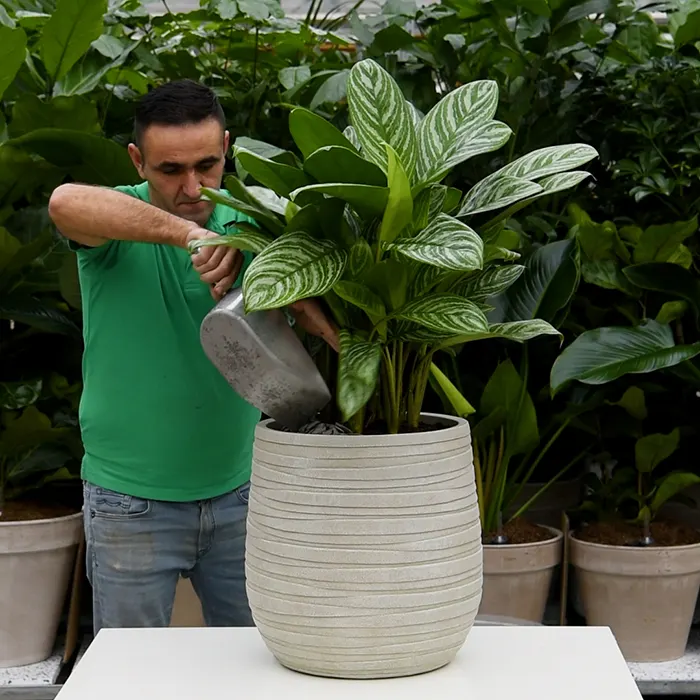
Baq Tornado
Darcy Beige
6TORDB118
Even with soil-culture plants, you can enjoy the benefits of hydroculture by assembling them according to the semi-hydro system. In this article, we will tell you what you need and explain – with the help of a clear instruction video and step-by-step guide – how you can get started immediately.
Watch the detailed instruction video directly or view below the necessities and step-by-step plan to immediately start assembling your semi-hydroculture plant-pot combination.
Hydro-granules have the ability to retain water and nutrients and release them slowly to the plant. The hydro-granules in our range are RHP-certified, ensuring an optimal start for cultivation. The RHP mark provides assurance that the substrate meets the right quality requirements with pH- and EC-neutral value.
We recommend using Peat free potting soil, which does not contain peat. With the addition of broken hydro-granules, this substrate still has sufficient water-absorbing capacity. Read more here about the benefits of this peat-free potting soil.
Choose a plant from our extensive range that best suits your needs. We use Aglaonema 'Stripes'.
For this instruction, we used a planter from the Baq Tornado collection, but almost any planter from our complete range is suitable. If the planter is not watertight, you can use a liner (see below).
A liner is needed to make the planter completely watertight. The handy universal liners from Baq are available in various sizes and can be cut to size.
With felt, you can separate the hydro-granules and potting soil. You can buy the felt cut to size, but it is also possible to buy felt on a roll and cut it yourself to the right size.
Using a water level indicator, the method of watering in semi-hydroculture is virtually the same for all plants. Water the plant until the water level indicator shows optimal (OPT). Note: the water level indicator always reacts with some delay, and it may be that debris blocks the water level indicator. Therefore, tap on the water level indicator if it does not respond as expected.
Give your assembled plant a luxurious look with a top layer of, for example, decorative stones.
The correct length of the water level indicator is determined by measuring the height of the pot and adding about 5 cm. The water level indicator should come about 5 cm above the plant to leave enough space for the water buffer.
With the water level indicator, measure the fill height in the planter where the liner will be placed.
The liner should come just under the edge of the planter and fit snugly. The liner can be easily cut to size with a knife.

The water level indicator and filler pipe are placed at the bottom of the liner.
Scoop hydro-granules into the planter to create a water buffer of 4 to 5 cm.
With felt or a separation cloth, separate the potting soil from the hydro-granules. Make an opening in the cloth for the water level indicator and the filler pipe.

Fill the remaining space in the planter well with potting soil. If desired, you can create a top layer with, for example, decorative stones.
After planting, water the plant in the regular way until the water level indicator shows optimal. After each month, adjust the ratio of water you give from the top and through the filler pipe. After one month, this is 80% from the top and 20% through the filler pipe; after two months 60/40, after three months 40/60, etc. In this way, the plant is encouraged to let the roots break through the separation cloth. When you water completely through the filler pipe, it is best to still give a small splash of water from the top to prevent the potting soil from drying out.
